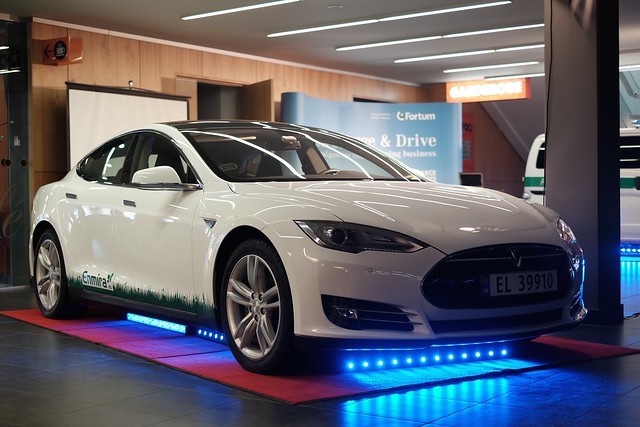
Tesla has become world renown for their superior performance electric vehicles. The Roadster put them on the map as the first production electric car that was actually refined, cool, and exciting. The heir to the awesome electric car throne, the Model S, will finally be delivered in 2012. The Model S sedan is targeted at electric vehicle fans with funds and maybe a couple kids. Remarkably, the base model will remain under their original target price of $50,000, at $49,900 after the $7,500 federal tax credit for electric vehicles purchased in or after 2010.
Tesla is providing a slew of classes and options for this electric sedan in hopes of capturing the absurdly rich and the upper middle class market share, so read closely. There are four classes of Model S: the Model S (plain, vanilla), the Model S Performance, the Model S Signature, and the Model S Signature Performance. On top of that, the plain Model S version has three, liquid cooled, lithium ion battery options, at 40, 60, and 85kWh. The other three classes (Performance, Signature, Signature Performance) all have the 85 kWh battery, standard, which pushes their ranges to a whopping 300 miles per charge. The 40 kWh option gives 160 miles and a 0-60 of 6.5 seconds, the 60 kWh battery puts out 230 miles and 5.9 seconds. The 85 Kwh pack gives you a 0-60 in 5.6. With the performance option that drops down to 4.4 seconds. The Signature label doesn’t necessarily enhance performance, but they are limited edition and available mid-2012, a few months earlier than the non-Signature class. They also carry about a $30,000-$50,000 premium over the base model.
All of the Model S classes will feature a 17-inch touch screen monitor which will contain media, GPS, and communications. The 200 watt stereo system will have radio, satellite radio, and USB ports. No CD player though, that’s so 20th century.

If you opt for the Signature series, you get the Tech Package standard, which includes xenon lights, keyless entry, LED foglamps, turn by turn navigation, power rear liftgate, back camera, rear USB ports, homelink, and electrochromatic side mirrors. A premium stereo system is also standard in the Signature class, and 1,000 bucks otherwise.
All Model S cars plug directly into 110 and 240 volt outlets with the Universal Mobile Connector and adapters. The High Power Wall Connector, which installs in your garage, enables cars equipped with Twin Chargers to charge twice as fast as cars equipped with a Single Charger. Cars equipped with a 60 or 85 kWh battery can use Tesla’s network of Supercharger stations.
Hope this helps clarify the many options and models of the Model S. For more information, visit Tesla’s Specifications page.








